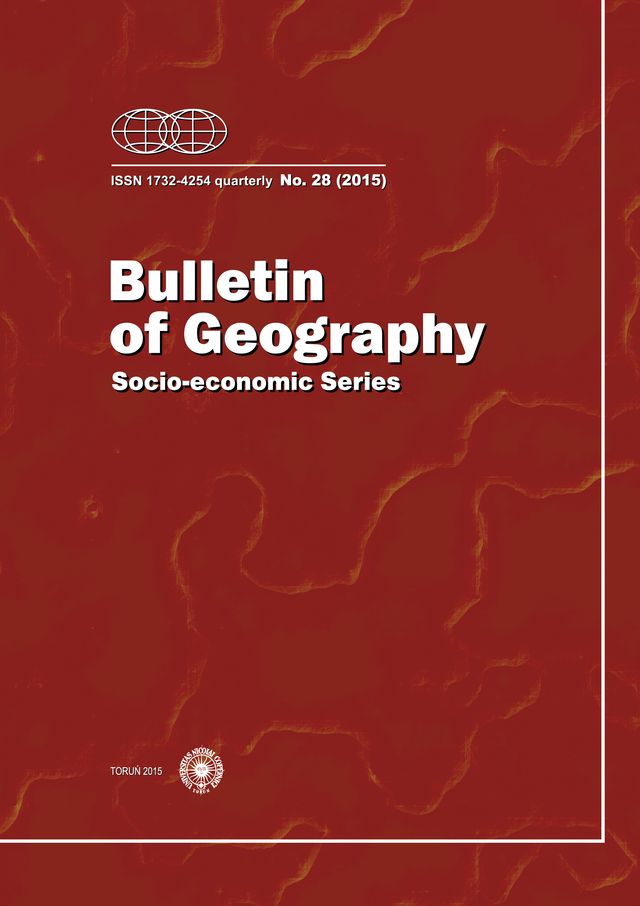Regional distance: the concept and empirical evidence from Poland
Regional distance: the concept and empirical evidence from Poland
Author(s): Jarosław Michał NazarczukSubject(s): Geography, Regional studies, Physical Geopgraphy, Human Geography, Environmental Geography
Published by: Wydawnictwo Naukowe Uniwersytetu Mikołaja Kopernika
Keywords: regional growth; regional inequality; economic distance; Poland; NUTS 2
Summary/Abstract: The main aim of this paper is to present the concept of regional distance as a measure of economic diversity at the regional level. Additionally, the paper is devoted to the identification of regional inequalities in Poland, based on the metric presented. Estimates of the regional distance between specific regions (NUTS 2) and the mean level of development of the national economy or Mazowieckie Voivodship (the region with the highest GDP per capita in Poland) were based on calculations conducted using logarithmic equations. Two different distances were calculated: (a) the mean number of years required to achieve the present reference area level of development, (b) the mean number of years necessary to achieve the reference area GDP per capita, taking into consideration the growth rate of the reference area. The empirical example of regional distance application revealed significant inequalities between regions of Poland at NUTS 2 level.
Journal: Bulletin of Geography. Socio-economic Series
- Issue Year: 2015
- Issue No: 28
- Page Range: 129-141
- Page Count: 14
- Language: English

